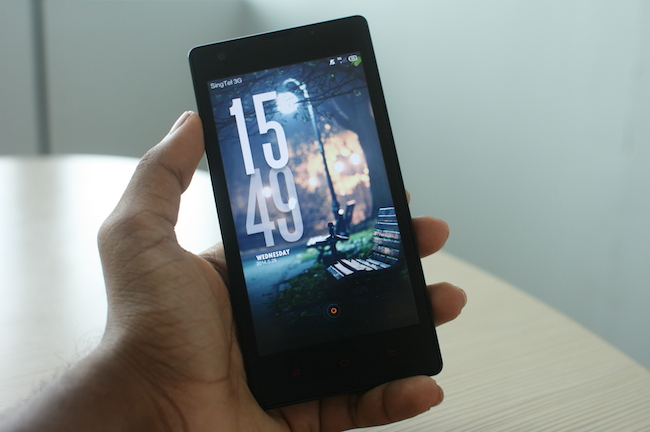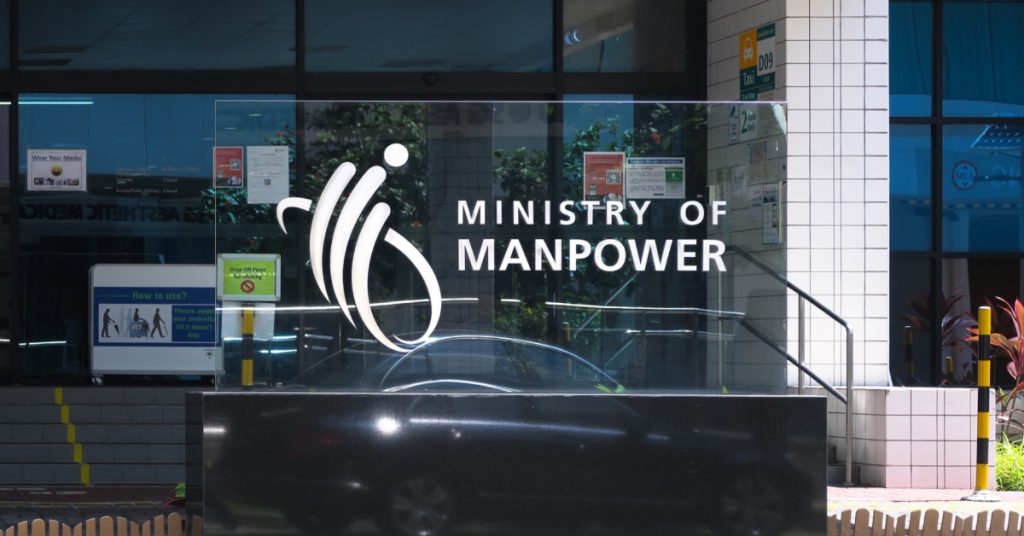This article originally appeared on Twenty First Tech, a content partner for Vulcan Post.
Overview
What is the kind of phone which comes to your mind when it is priced at S$169? Budget phones which are barely functional with unresponsive touchscreens and begin to lag after weeks of use? For too long, this has been the kind of standard which consumers have come to expect and Xiaomi has shattered this perception with their budget phone, the Redmi, also known as the Hongmi in China. Even at such low prices, the Redmi manages to pack in a power seen in mid-range phones into a dirt-cheap device.
Pros:
- Extremely cheap
- Boasts a quad core processor
- Large, high resolution display
- Dual SIM – convenient for frequent travelers
- MIUI is pleasing to the eye
Cons:
- MediaTek processor is far behind Qualcomm’s offering
- Slow-focusing camera, especially in low light conditions
- No LTE radio
Introduction
Xiaomi has been playing up the publicity for its phone mostly on social media. With proclamations of this phone selling out within minutes after it was available to buy, it naturally attracted the attention of many people in the market, especially those who were looking to replace their own phones. I was one of them. Fully aware that the publicity might have been a gimmick (given that Xiaomi limits stocks in their flash sales) I nevertheless decided to give this phone a try to retire my relatively old Samsung Galaxy SII.
When I first purchased this phone, I was not expecting much, given its price tag. Furthermore, this brand is relatively unknown, so its name does not conjure images of, say, glamour (Apple iPhones) or good design (HTC). The specs of the phone seemed amazing, possibly too good to be true considering the price. I thought, there has to be a catch. However, after 2 weeks of using the Redmi, all I can say is that the Redmi has passed and exceeded every expectation I had of it.
Here are the basic specs of the Redmi:
As can be seen, these specs are really bare-bones for a person who mainly uses phones in the middle-high end of the market, but one ought to keep in mind that this phone costs only $169. For phones in this end of the market, there is almost no competition for the Redmi in terms of price. The Redmi 1S is also now available with a more powerful Snapdragon 400 processor and 8 GB of internal storage.
However, the Moto G and Asus Zenfone 5, have been similarly priced with similarly competitive specs, so the Redmi is definitely not alone. I suspect that it would increasingly face competition as more manufacturers begin to start producing good budget phones.
Design and Build Quality
The design of the Redmi is pretty much something we would expect from any phone on the market. The black matte cover feels surprisingly good in the hand, unlike the cheap feel of Samsung devices. This really shows that you can produce a good feel in a phone even with plastic. Personally, I believe that plastic itself isn’t a problem, it’s the glossy plastic which people everywhere have a problem with. Matte plastic usually feels better than glossy plastic, as has been shown with the Nexus 5, the Mi3, and Nexus 7.

Regrettably, there is no backlight on capacitive buttons. This could initially pose a challenge to people who have been used to backlights on their previous phones. I say initially, however, because this is not a big problem over time as one gets used to the buttons’ placement at the bottom of the screen. Nonetheless, this is a point of improvement for Xiaomi in future editions of the Redmi.
Lock button and volume buttons are both located on the right side of the phone, which can pose a problem for people who inadvertently press the lock button when trying to adjust the volume.
The phone lacks LTE connectivity, which can be extremely annoying to consumers who possess LTE ready SIM cards. In fact, the Redmi’s more powerful brother, the Mi3, does not support LTE either, a definite bummer considering that very few people do not use LTE now.
The dual SIM-card slots
The dual SIM capability definitely comes in handy for the frequent traveller, as they do not need to swap out their SIM cards whenever they travel. Do note, though, that only one SIM card slot supports 3G. It’s quite impressive that Xiaomi identified that the second SIM card slot does not really need to support 3G connectivity, as travellers would only use 3G on the primary local SIM card. It shows that they are cutting the costs of production wisely. This could actually save battery power too, certainly a boon.
Handling
The Redmi seems a bit too heavy for my liking, but this perhaps is a result of the way weight is distributed in the phone. My wrist tends to hurt after holding it for short periods of time (around 5 minutes), and this is something I have not encountered with other phones previously. To counter this, I have been using both hands to support the phone when I am using it for long periods of times.
As aforementioned, the lock and volume buttons can be easily confused by new users, but as one gets used to it, this becomes less of a problem.
Display
The clarity of videos I watched on YouTube was breathtaking, even though the display is just 720p. Spread over 4.7 inches, the pixel density is 312 ppi – nearly the 326 ppi classified as “Retina” by Apple. Worries I had about blurry text were quickly put to rest, and the high ppi display makes watching video enjoyable. Gone are the days of tolerating substandard video quality for budget phones. The IPS screen ensures wide viewing angles, and largely accurate colour reproduction.
However, the backlight does not seem very powerful. Setting the slider all the way to the right, the Redmi did not seem as bright as other phones on the market, especially the Moto G. This is something to take note of if you are going to be outdoors all the time, as sunlight legibility suffers due to this.
Battery Life
With just a 2050mAh capacity, the battery runs out considerably fast, but can last me for a day generally, even with moderate usage on social media applications. However, if you are a power user who thinks you will easily exhaust the battery in a day, batteries are removable and can be easily replaced if needed.
Xiaomi sells additional batteries at only S$9.99. Yes, it is that affordable. With an extra affordable battery pack, you would surely be able to last the day even if you’re the heaviest of users. You could also, of course, buy the Xiaomi 10400 mAh Power Bank, which costs only S$14.99, and your battery woes would be forgotten.
User Interface
MIUI v5 is much praised and for good reason. The UI, based on Android, is clean, sleek and minimalist. However, the home screen bears similarities to iOS. This has led to many to remark that MIUI is a hybrid of Android and iOS, which is not necessarily a bad thing. It incorporates the best of both worlds for a satisfying user experience.
Every app you download is stored on the home screen. This is very similar to iOS, and you would be used to it if you’re an iOS user. However, this is unlike most Android phones where there is an app drawer. For users who download many apps, their home screen can get a little cluttered and hard to navigate. I have ended up dumping many of the apps I do not intend to use into a junk folder (iOS users will understand this problem. Most iPhones have an “Apple” folder for all the stock apps which are useless.). This is one point I believe Xiaomi can improve on, because the App Drawer functionality does aid in organisation, and removing it cripples the organisational powers of the user.
A neat trick you can do on the lock screen is to hold the home button to activate the flashlight, which is really convenient.
Double clicking the unlock the button allows you to access the music player, increasing convenience. However, one limitation is that this only works on the stock theme.
The MIUI also includes themes, which are developed in-house exclusively for Xiaomi device owners. Themes in the store modify the UI extensively. Xiaomi has developed a special theme to celebrate its launch in Singapore, with a backdrop of the Marina Bay Sands Hotel. The choice of themes in the store is extremely abundant, though some of the more visually pleasing themes are not free, so you would have to pay using MiCredits to obtain them.
MIUI includes a Security app. Contrary to its name, it has a lot more functions than just providing security for the phone. It allows you to check the security of your phone but also has a “Cleaner” function, much like CCleaner, which allows you to clean up junk files on your phone, allowing it to run quicker.
Audio
The speaker on the Redmi is satisfactory – it is loud and does not distort at loud volumes.
The MIUI music player touts a software which modifies the music to best suit your earphones. Personally, I feel this is a gimmick (as are most music modifying apps, what’s new?). The software allows one to modify the music based on whether one is wearing normal earphones, Xiaomi earbuds, Xiaomi in-ear headphones or Xiaomi piston headphones.
As can be seen, software modifications only affect Xiaomi earphones, and come on, I’m pretty sure that while they look decent, they probably won’t be able to match the performance offered by earphones made by dedicated earphone brands. Nonetheless, even if you are not using a Xiaomi earphone, you can still try these settings. They simply modify the equalizer to place emphasis on different parts of a song. There is nothing special in these modes, though I have not personally tried the different settings with Xiaomi earphones. Perhaps they’d improve the sound quality of the Xiaomi earphones, but past efforts by other companies to boost music quality of earphones have pretty much failed spectacularly, so I’d err on the safe side and assume they are useless before making my decision on buying the Redmi.
Camera
Xiaomi has included an 8 MP camera module with the Redmi, which is sufficient for most tasks. While on paper it has a higher resolution than even the HTC One (M8) flagship, its images and videos do lose out due to the pixels themselves being smaller.
Still Imaging:
The camera is satisfactory, it is able to capture good quality photos in well-lit conditions, so much so that it actually outperforms the HTC One (M8) in both quality and resolution. However, the performance drops like a stone in low light conditions, as expected. The camera app becomes laggy, and images are noisy and lack detail.
Video:
The video quality is a larger issue for the Redmi. Even though it is able to shoot in 1080p at 30 FPS, videos in the day as well as in the night sorely lack detail. Noise is especially rampant at night, and colour reproduction also suffers greatly.
Day:
Night:
Nonetheless, an 8 MP camera is to be commended, as most budget phones of this price would have further compromised on the camera quality. There are also features such as HDR and panorama, though Xiaomi’s panorama leaves a lot to be desired, as it was sluggish when trying to take images in that mode.
Conclusion
To conclude, the Redmi is an exceptional phone for its price. Its specs might not dazzle you – that privilege is reserved for its more superior cousin – Mi3, but the specs are definitely good enough for a phone priced at S$169.
If you’re someone who’s looking for a decent phone on a low budget, do strongly consider the Redmi. However, if you are a tech buff and have high expectation for specs, then the Redmi is not for you.
In that case, you might gravitate towards the Moto G, which has the much more powerful Qualcomm Snapdragon 400 processor. However, it is nearly double the price of the Redmi at S$318, and at that point, you might as well just pay about 21 bucks more to just get the Mi3 ($339). If you’re unsure on which one to purchase, have a look at our Redmi vs Moto G comparison article.
That said, the sequel to the Redmi, the Redmi 1S, has been launched in Singapore. It ditches the MediaTek for the Snapdragon 400, comes with 8GB internal storage and Bluetooth 4.0 – up from the 4GB Bluetooth 3.0 seen in the Redmi. All this, while retaining the same price as its predecessor at S$169. No sense in upgrading, but you can pick up the 1S with a high degree of assurance of the Xiaomi brand.
All in all, the Redmi is a seriously capable device, and for something that retails at such a low price, you get quite a lot inside and big, big bang for buck. What do you think of the Redmi?enablejsapi=1&html5=1& Would you purchase it if on a budget?































